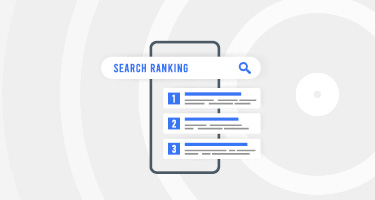Our digital age is a visual one. Images, videos and infographics aren't mere enhancements, they're essential for grabbing attention, communicating effectively and inspiring action.
In the legal field, infographics offer unique benefits like simplifying complex concepts, increasing client engagement and enhancing online visibility.
By leveraging the power of visual communication, legal professionals like you can effectively connect with their audience and achieve their goals.
The Legal Infographic Advantage
Legal infographics can make complex concepts easier to understand, providing clients with a clearer picture of their legal matters. By visually breaking down intricate information, legal infographics help simplify and clarify the often-overwhelming language of the law, making it more accessible.
They can also help build trust with clients by presenting legal processes in a straightforward, more understandable manner, allowing potential clients to feel more confident in their decisions.
In addition to enhancing client relationships, legal infographics are also valuable for improving your website's search engine ranking. By generating backlinks from other authoritative websites, they can increase your visibility online and drive more traffic to your site. This boost in SEO can lead to a greater online presence and attract more potential clients.
Using legal infographics is an effective way to differentiate your firm from competitors, presenting your expertise in an engaging and professional format. Legal infographics allow you to communicate more effectively with both existing and potential clients, while also positioning your firm as an approachable leader in your field.
Six Types of Legal Infographics You Should Know
Different legal marketing infographic types serve distinct purposes, each designed to highlight specific information and engage your audience in unique ways. Below are some of the most frequently encountered types:
- Statistical Infographics: Visual representations of data that make complex information easier to understand and digest. They transform raw data into engaging and informative graphics, such as charts or graphs.
- Process Infographics: Think of these as visual roadmaps, that guide clients through complex legal processes, such as the steps of how to file for a divorce.
- Comparison Infographics: Serve to help clients understand the pros and cons of different legal strategies.
- Timeline Infographics: They can showcase the timeline of a legal case or highlight key historical events that have shaped the legal scene.
- Educational Infographics: These infographics can demystify complex legal jargon. They can explain legal concepts concisely, making them accessible to a wider audience.
- Case Study Infographics: Highlight successful cases and strategies. By sharing these stories visually, you can inspire confidence in potential clients.
How to Create Impactful Legal Infographics
When creating legal infographics, it’s important to start by defining your goals. Are you trying to educate, promote your services or share information? Knowing the purpose will guide your approach to law infographics creation.
Understanding your audience is key to whether it’s clients, businesses or other lawyers, this will influence how you present the information.
Make sure the data you use is from reliable sources and always present it clearly to avoid confusion. Lastly, think of your legal infographic as a story to organize the information in a way that’s easy to follow and makes sense to your audience.
Best Practices for Designing Legal Infographics
When designing legal infographics, aim for simplicity and clarity. Organize your content with concise headings and subheadings to guide the reader through the information.
Ensure the design is optimized for all devices so it’s easy to read no matter the screen size. Incorporate your firm’s branding to keep the look professional and consistent.
To add more engagement, consider including interactive features like clickable sections or embedded media.
Tools and Resources for Law Infographic Creation
There are various tools and resources available to help you create professional-quality infographics. From user-friendly platforms to advanced design software, here are some of the top options for creating impactful infographics for law firms:
Beginner-Friendly Tools
These platforms are great for those new to law infographic design, offering intuitive interfaces and pre-made templates.
- Canva: Easy-to-use with a wide range of templates for quick infographic creation.
- Venngage: Provides customizable templates specifically tailored to legal content.
- Piktochart: Simple and effective for creating informative and visually appealing designs.
Professional Design Platforms
Advanced tools allow full creative control and flexibility.
- Adobe Illustrator: Industry-standard software for vector design and detailed graphics.
- Figma: A collaborative design tool that allows teams to work together on infographic projects in real time.
Free Resources for Law Infographics Creation
Enhance your infographics with free resources that can save time and improve quality.
- Icon Packs: Access free icons to represent legal concepts and actions.
- Templates: Find free templates to kickstart your infographic creation.
- Online Tutorials: Learn design tips and tricks to improve your infographic skills.
- AI-Powered Tools: Use AI to generate design ideas, analyze data or automate repetitive tasks, allowing you to focus on creativity.
Distribution Strategies for Law and Legal Infographics
To get the most value out of your law firm's infographics, consider where and how you can share them. Start by adding them in blog posts, case studies or landing pages on your website to make your content more engaging.
Post them on social media platforms like LinkedIn, Twitter and Instagram while using appropriate hashtags to expand your reach. Include law infographics in your email newsletters to keep your subscribers engaged.
You can also use them in targeted digital ads to attract new clients. Take advantage of offline opportunities by adding them to presentations, brochures or event handouts.
Common Mistakes to Avoid When Creating a Legal Infographic
When creating a legal infographic, it's important to avoid some common pitfalls. One of the biggest mistakes is packing in too much information, which can overwhelm and confuse your audience.
Low-quality design, like unpolished visuals, can hurt your firm’s credibility. Accessibility is key to making sure both the text and visuals are clear and easy for everyone to understand.
Not optimizing your infographic for SEO can limit its visibility and without a strong call-to-action, you miss the chance to engage your viewers effectively. Keep it simple, clear and purposeful to make the most impact.
Key Takeaways from Infographics in Legal Marketing
Legal infographics are an excellent way to boost your legal marketing by making complex topics more accessible and engaging for your audience.
They not only help capture attention but also drive engagement and enhance your firm's reputation. However, to get the most value out legal marketing infographics, it’s crucial to plan, design and promote them thoughtfully.
Be sure to craft clear messages, use high-quality visuals and strategically distribute your infographics to reach the right people.
Want to take your digital marketing further? Explore The Best Lawyers Digital Marketing Platform for tailored strategies and expert insights designed to drive meaningful results.






























